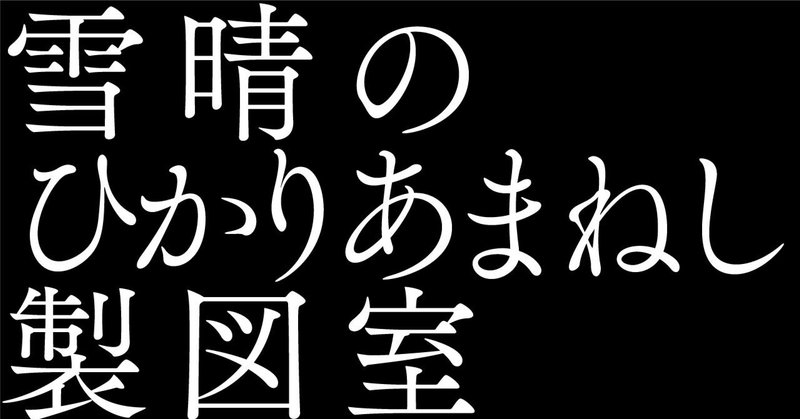
#217 AIが俳句を解釈したらこうなった。 「雪晴のひかりあまねし製図室」篠原鳳作
雪晴のひかりあまねし製図室
篠原鳳作
"Snow clears, abundant light floods the drafting room"
Housaku Shinohara

解説:
この俳句は、雪が晴れた後の光景を描いています。ここでの「雪晴」(ゆきばれ)は、雪がやんで晴れ間が見える様を指し、冬の風物詩として日本の俳句によく登場します。また、「製図室」という言葉は、普段は閉ざされがちな室内の空間を思わせ、外の雪晴れとの対比が印象的です。
表現手法
「ひかりあまねし」という表現は、晴れた後の日光が溢れる様子を表しています。ここには光の明るさや暖かさが含まれており、冬の寒さや厳しさとは対照的なイメージを生み出しています。また、「製図室」という具体的な場所を挙げることで、視覚的な描写だけでなく、日常の一コマを思い浮かべさせます。
情緒・感情・情感・情念
この俳句からは、穏やかで静かな情緒が伝わってきます。雪晴れの光が製図室に溢れる様子は、平和で落ち着いた時間の流れを感じさせます。また、冬の寒さから解放される暖かさや、光の中で新たに始まる一日への希望も感じられます。このように、季節の変化を通して人々の内面の感情や情感が巧みに表現されているのが特徴です。
時期のイメージ
1月6日という時期は、新年が始まったばかりで、冬の寒さが厳しい中にあります。この俳句は、その冬の厳しさの中での一時的な晴れ間、そしてその光がもたらす心の安らぎや希望を感じさせる作品と言えるでしょう。冬の始まりを告げる時期に、ほんの少しの温もりや光を見出す詩的な表現が、この俳句の魅力です。
英訳:
Explanation
This haiku by Shōhō Shinohara, "Snow clears, abundant light floods the drafting room," depicts a scene after snow has cleared.
Seasonal Aspect
The haiku captures a winter scene, specifically the moment when the snow stops and clear skies appear, a common theme in Japanese haiku known as 'yukibare' (snow clearing). The reference to a 'drafting room' contrasts an indoor space, usually closed off, with the outdoor clarity post-snowfall, creating a striking juxtaposition.
Artistic Expression
The phrase 'abundant light' vividly portrays the overflowing sunlight following the clearing of the snow. This imagery not only conveys the brightness and warmth of light but also contrasts with the harshness and cold of winter. By mentioning a 'drafting room,' a specific and relatable location, the haiku not only provides a visual depiction but also evokes a slice of daily life.
Emotion and Sentiment
This haiku exudes a tranquil and serene sentiment. The imagery of light filling the drafting room post-snow-clearing invokes a sense of peaceful time flow. The warmth breaking through winter's cold and the light signaling the start of a new day bring feelings of relief and hope. The haiku skillfully expresses the emotions and sentiments of people through the transition of seasons.
Imagery of the Date
The date, January 6th, is the onset of a new year, marked by the severity of winter. This haiku captures a moment of respite and hope amid the cold, reflecting the warmth and light found in a brief clearing during this time. The beginning of winter, heralding a new start, is poetically portrayed with a subtle warmth and light in this haiku, showcasing its allure.
篠原鳳作
篠原鳳作(1906年1月7日 - 1936年9月11日)は、日本の俳人で、無季俳句で知られています。彼の本名は篠原国堅で、旧号は未踏、雲彦としても知られています。鹿児島県出身の鳳作は、東京帝国大学法学部を卒業後、病弱と就職難のため郷里に帰り、句作に没頭しました。
鳳作は、無季俳句の名手として知られ、「天の川」や「傘火」といった俳句雑誌に作品を投稿し、新興俳句運動に貢献しました。彼の代表作には「しんしんと肺碧きまで海の旅」(1934年)があり、これは無季俳句の存在と可能性を俳壇に知らしめた重要な作品です。また、「蟻よバラを登りつめても陽が遠い」などの作品もあり、青春性を湛えた句風で評価されています。
鳳作の俳句の特徴は、季題に縛られない自由な発想と、詩的な表現にあります。彼は都会の構成美や社会的感覚を詠む際にも、季題を使用せず、魂のはばたきを重視しました。彼の無季俳句への進出は、沖縄県在住時の経験から来ており、季節感が乏しい沖縄で俳句を作ることの困難さが、無季俳句への道を切り開くきっかけとなりました。
生涯を通じて、鳳作は病弱であり、早逝したことが彼の作品に深い影響を与えています。また、彼は教師としてのキャリアも持ち、その間に芸術に対する影響力を持っていました。
鳳作の俳句は、季節の変化や自然の美しさだけでなく、都会の景観や社会的なテーマにも焦点を当て、俳句の可能性を広げたことで、現代俳句に大きな影響を与えました。彼の作品は、俳句の伝統的な形式を超えた新しい表現の道を切り開いたと評価されています。
一月六日
(英訳:ChatGPT 解説:Bing / ChatGPT 画像生成:midjourney)
この記事が気に入ったらサポートをしてみませんか?
